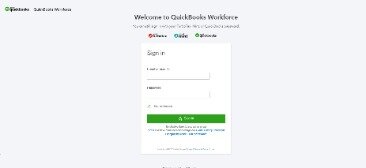Cost-Volume-Profit Analysis
Contents:


Lender and investors will expect to see it as it gives them a good indication of when they might see their loans repaid or when they’ll get a return on their investment. And just like the output for the goal seek approach in Excel, the implied units needed to be sold for the company to break even come out to 5k. All incremental revenue beyond this point contributes toward the accumulation of more profits for the company. All businesses share the similar goal of eventually becoming profitable in order to continue operating. Pay close attention to product margins, and push sales of the highest-margin items, to reduce the breakeven point. Pay close attention to consumer psychology as well as different pricing strategies in order to prevent the situation in which you sell more things but end up with a loss overall.
You can figure your contribution margin ratio using sales and expense information from your most recent year in business. A breakeven analysis determines the sales volume your business needs to start making a profit, based on your fixed costs, variable costs, and selling price. It often is used in conjunction with a sales forecast when developing a pricing strategy, either as part of a marketing plan or a business plan. The cost volume profit chart, often abbreviated CVP chart, is a graphical representation of the cost-volume-profit analysis. In other words, it’s a graph that shows the relationship between the cost of units produced and the volume of units produced using fixed costs, total costs, and total sales. It is a clear and visual way to tell your company’s story and the effects when making changes to selling prices, costs, and volume.
How do you calculate a breakeven point in options trading?
With corporations facing so many economic challenges it’s more important today than it has been for a long time. If your company does its analysis accurately, you’ll be in a much better position to handle these challenges and make sure the company stays financially viable and commercially successful. With so many economic headwinds facing companies identifying when your business has broken even is more important than ever. Healthy cash flow and profitability are key to the survival of any new business, but with today’s concerns about inflation, vulnerable supply chains and the fight for talent, they are vital. Sage Intacct Advanced financial management platform for professionals with a growing business.
If a firm has fixed costs of $30,000, a variable cost per unit of $.75, and a break-even point of 5,000 units, the price is A. If a firm has fixed costs of $30,000, a variable cost per unit of $0.75, and a break-even point of 5,000 units the price is _____. Sales values at various levels of output are plotted from the origin and joined is called the sales line. The lines produced from the inter-section to Y-axis and X-axis may give sales value and the number of units produced at break-even point respectively. While Operating Income doubled, (from $10 to $20) only 5 additional units sold (+25%) were required as only variable costs changed while fixed costs remained at $30. Contribution margin is the portion of a product’s revenue that exceeds the variable cost of producing that product and generating that revenue.
What is the Breakeven Point?
Variable costs can be represented graphically by an upward-sloped line. The company can also assess whether proposed new products should be added to its product line or if unprofitable existing products should be discontinued. For example, suppose your company manufactures and sells 1 million bottles of a drink, each at $1.50 with $1 in variable costs.
Examples of variable costs include direct materials and direct labor. So, what’s the difference between fixed vs. variable costs? Fixed costs are expenses that remain the same, regardless of how many sales you make. These are the expenses you pay to run your business, such as rent and insurance. The income of the business exactly equals its expenditure.
The Many Benefits of Financial Planning – AOL
The Many Benefits of Financial Planning.
Posted: Thu, 20 Apr 2023 20:00:23 GMT [source]
Your calculation means that if you sell 8,571 pairs of shoes, you will end up with zero profit and will exactly break even. Hearst Newspapers participates in various affiliate marketing programs, which means we may get paid commissions on editorially chosen products purchased through our links to retailer sites. The first step required to perform a CVP analysis is to display the revenue and expense line items in a Contribution Margin Income Statement and compute the Contribution Margin Ratio. In my next post I’ll go over the impact of discounts on profit, particularly about how seemingly small discounts can get you in the red if you fail to make an important calculation I’ll explain. So, if you’re considering offering discounts or even cutting your prices, I would encourage you to watch that one. If we solve this equation, we get to the conclusion that we need to sell 143 cakes every month for $50 each, to break even.
Using BreakEven Calculations
One, is that our selling price remains constant regardless of how many units we sell. When it comes to fixed costs, because they’re fixed, regardless of the number of cakes we produce, we’ll always have a cost per month of $5,000. Customers do not pay for the work that your salespeople do.
Should You Plan for Retirement as a Couple or as Individuals? – AOL
Should You Plan for Retirement as a Couple or as Individuals?.
Posted: Fri, 21 Apr 2023 14:53:01 GMT [source]
Use your break-even point to determine how much you need to sell to cover costs or make a profit. And, monitor your break-even point to help set budgets, control costs, and decide a pricing strategy. Typically, the first time you reach a break-even point means a positive turn for your business. When you break-even, you’re finally making enough to cover your operating costs.
Note that frequently as production volume increases, the variable cost per unit decreases. That’s because we start getting quantity discounts, or economies of scale. That’s not being considered here for simplicity reasons, but in real life you may want to (the upward-sloped line wouldn’t be a straight one in that case). The gross profit calculation already includes the above the line “direct” variable expense. You need to add the variable costs that are below the line.
6 Breakeven Analysis
The first pieces of information required are the fixed costs and the gross margin percentage. This is variation of the first method in which variable cost line is drawn first and thereafter drawing the fixed cost line above the variable cost line. The added advantage of this method is that contributions at various levels of output are automatically depicted in the chart. The angle which the sales line makes with total cost line while intersecting it at BEP is called angle of incidence.
- Therefore, in the case of our sandwich business, the contribution margin is $2 per unit/sandwich.
- Existing businesses should conduct this analysis before launching a new product or service to determine whether or not the potential profit is worth the startup costs.
- Select the data and edit the graph appropriately to change to correct the labels.
A large angle of incidence denotes a good profit position of a company. First, you’ll need to make sure that you know all of the various costs of doing business. You’ll then need to separate your costs into your fixed costs and your variable costs. The amount of sales at which net income is equal to zero and total revenues are equal to total expenses is known as the break-even point. This is often referred to as the no-profit, no-loss point. The break-even point in units represents the number of units you must sell to break even.
What is the break even formula?
The breakeven point would equal the $10 premium plus the $100 strike price, or $110. On the other hand, if this were applied to a put option, the breakeven point would be calculated as the $100 strike price minus the $10 premium paid, amounting to $90. Assume an investor pays a $4 premium for a Meta put option with a $180 strike price. That allows the put buyer to sell 100 shares of Meta stock at $180 per share until the option’s expiration date. The put position’s breakeven price is $180 minus the $4 premium, or $176. If the stock is trading above that price, then the benefit of the option has not exceeded its cost.

A high safety florida income tax rate is preferred, as it indicates sound business performance with a wide buffer to absorb sales volatility. On the other hand, a low safety margin indicates a not-so-good position. It must be improved by increasing the selling price, increasing sales volume, improving contribution margin by reducing variable cost, or adopting a more profitable product mix. It is defined as the moment at which sales and costs are equivalent to one another or as the time when a company’s sales are sufficient to pay the expenses of the firm. Although generating a profit is desirable, paying off debt and operating costs comes first for most businesses. Both fixed and variable costs have the potential to influence the profit margin of a business.
The variable costs for different levels of activity are plotted over the fixed cost line, which shows that the cost is increasing with the increase in the volume of output. The variable cost line is joined to fixed cost line at zero volume of production. It’s equal to your fixed costs (e.g. rent, property taxes, equipment costs and interest), divided by your average selling price, minus variable costs. The break-even point calculation allows food service operators to calculate the number of covers or total sales needed to cover all costs of the operation given the level of business generated. Once the break-even point is met, additional revenue starts to generate a profit, which is typically at least one purpose of running a business. Cost volume profit analysis allows the food service operator to calculate similar figures but with a targeted profit in mind.
The break-even formula determines the sales level required to cover costs before making a profit. If non-cash expenses aren’t included in the calculation, a business can also compute its cash break even point. To find the number of units required to break even, simply divide the firm’s total fixed costs by the unit contribution margin. This lets managers and business owners know the level of sales required to cover all costs and begin earning a profit. You subtract the $300,000 in fixed costs to get $200,000 in operating profit.
Budgets for different company activities may be planned with more precision when a break-even point analysis is performed. In addition, they are able to establish goals to increase the production pace and successfully accomplish these goals to generate a beneficial result. This involves determining what price security has to achieve in order to precisely pay all expenses connected with trade, such as taxation, commissions, management costs, and so on.
This CVP analysis is an essential tool in guiding managerial, financial and investment decisions for current operations or future business ideas or plans. The equation above demonstrates 100 percent of income ($100) minus $60 from variable costs equals $40 contribution margin. The equation below demonstrates revenues doubling to $200 and deducting fixed costs of $120, that results in $80 contribution margin. Using the data from the previous example, what level of sales would be required if the company wanted $60,000 of income? The $60,000 of income required is called the targeted income.
Businesses can even develop cost management strategies to improve efficiencies. Break-even analysis assumes that the fixed and variable costs remain constant over time. Costs may change due to factors such as inflation, changes in technology, or changes in market conditions. To find your break-even point, divide your fixed costs by your contribution margin ratio. On the other hand, variable costs change based on your sales activity.
Homestead Exemption: What It Means and How To Qualify – AOL
Homestead Exemption: What It Means and How To Qualify.
Posted: Thu, 20 Apr 2023 21:25:31 GMT [source]
The owner wants to know the sales volume required in terms of both dollars ($) and the number of covers for the restaurant to break even considering its current expense structure. Cost-volume profit analysis is an essential tool used to guide managerial, financial and investment decisions. CVP analysis requires that all the company’s costs, including manufacturing, selling, and administrative costs, be identified as variable or fixed.
For each of these approaches, you will need to be aware of your fixed costs, variable costs, and cost of sales. This includes that CVP analysts face challenges when identifying what should be considered a fixed cost and what should be classified as a variable cost. Once seemingly fixed costs, such as contractual agreements, taxes, rents can change over time. In addition, assumptions made surrounding the treatment of semi-variable costs could be inaccurate.